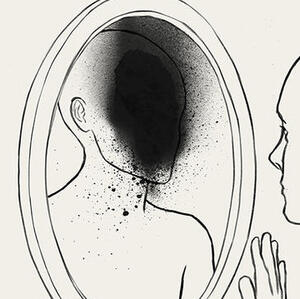Borderline Personality Disorder (BPD)
BPD is a mental disorder characterized by unstable moods, behavior, and relationships. Use this Carrd to find basic information on BPD.
This Carrd is made by Sam, a person with diagnosed BPD. Find them at the bpddiaries123 on Twitter.

Symptoms

-Efforts to avoid real or imagined abandonment, such as rapidly initiating intimate (physical or emotional) relationships or cutting off communication with someone in anticipation of being abandoned
-A pattern of intense and unstable relationships with family, friends, and loved ones, often swinging from extreme closeness and love (idealization) to extreme dislike or anger (devaluation)
-Distorted and unstable self-image or sense of self
-Impulsive and often dangerous behaviors, such as spending sprees, unsafe sex, substance abuse, reckless driving, and binge eating. Please note: If these behaviors occur primarily during a period of elevated mood or energy, they may be signs of a mood disorder—not borderline personality disorder
-Self-harming behavior, such as cutting
-Recurring thoughts of suicidal behaviors or threats
-Intense and highly changeable moods, with each episode lasting from a few hours to a few days
-Chronic feelings of emptiness
-Inappropriate, intense anger or problems controlling anger
-Difficulty trusting, which is sometimes accompanied by irrational fear of other people’s intentions
-Feelings of dissociation, such as feeling cut off from oneself, seeing oneself from outside one’s body, or feelings of unreality
One must fit 5 of the 9 criteria to be diagnosed with Borderline Personality Disorder
What is a Favorite Person/FP?
A Favorite Person, or FP, is, in the borderline community, a person that the pwBPD (person with BPD) cannot live without. The FP is their everything, their human drug. For someone with BPD, the favorite person is deemed the most important person in their life. This person can be anyone, but it’s often a romantic partner, family member, good friend, or another supportive person (like a coach, therapist, or teacher).
This person may become the source of all happiness and validation. The individual with BPD wants their favorite person’s attention as much as possible, and the quality of the relationship can undoubtedly shape their mood, confidence, and sense of security.
A pwBPD finds an FP to compensate for the emotional neglect/trauma we received as children. We are terrified of being abandoned by an FP, as it takes us right back to the neglect we experienced as children.
However, there can be healthy FP-ships. Set boundaries and expectations early, support the pwBPD within reason and without cost to your own health, and communicate clearly. Do not be afraid to ask each other questions - Having an FP can be an intense but beautiful experience, if done healthily.

Boundaries with an FP
There are many boundaries one should set with an FP. Below is an example of boundaries my friends Jinx and Mit have set with their own FPs. Use these as a guide, or even use these as your own boundaries.
Tone: pwBPD are hypersensitive to tone, especially to their FPs tone, and they get anxious easily. When your tone changes, or if you think something you're about to write could come off in a way you don't mean, please specify with tone tags so we don't miscommunicate anything. Ask yourself, as the FP or as the pwBPD, is there anything specific i should know when using tone tags with you?
Jokes: FPs are a very serious and emotional thing for pwBPD. Do NOT joke about them unless given explicit consent by the pwBPD. Same with BPD jokes. This goes for everyone; Do not joke about people's mental health unless the person being joked about explicitly said it's okay. Every pwBPD is different. For example, the writer of this Carrd, Sam, is okay with FP/BPD jokes. But other people may not be. So please be aware and be communicative.
Obsession: The FP obsession can be exhausting, on both sides. If it ever gets too much, communicate with each other. Often, the pwBPD does not realize nor understand when too much is too much when it comes to their Favorite Persons. The pwBPD should be actively working on quelling their obsession, whether that be on their own, or with a therapist.
Breaks: If (and I'm wording this lightly) "dealing with" a pwBPD's FP feelings becomes too much, please communicate that to the pwBPD. We don't ever want you to feel overwhelmed or upset, and will do anything to make the situation better. Please brainstorm solutions with us, so we can keep the FP relationship healthy.
Paranoia: pwBPD are typically very paranoid when it comes to our FPs. If you want to cut contact with us permanently or temporarily at any time. but if you still want to maintain healthiness while departing, it is asked of you to at least leave a note or discuss it with us, whichever is easier/better.

How to Cope with BPD
There are many ways to cope with Borderline Personality Disorder, such as Cognitive Behavioral Therapy (CBT), Mentalization-based Therapy (MBT), and Dialectical Behavioral Therapy (DBT). Below are some links on treatment ideas as well as how to find a therapist near you.
